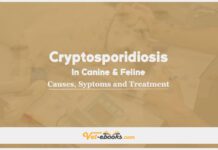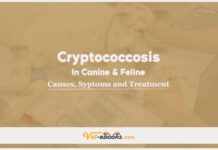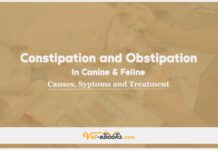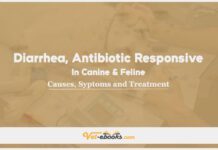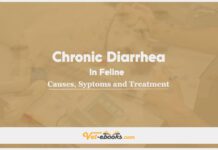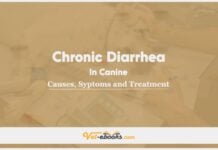Fiber-Responsive Large Bowel Diarrhea In Canine: Causes, Symptoms and Treatment
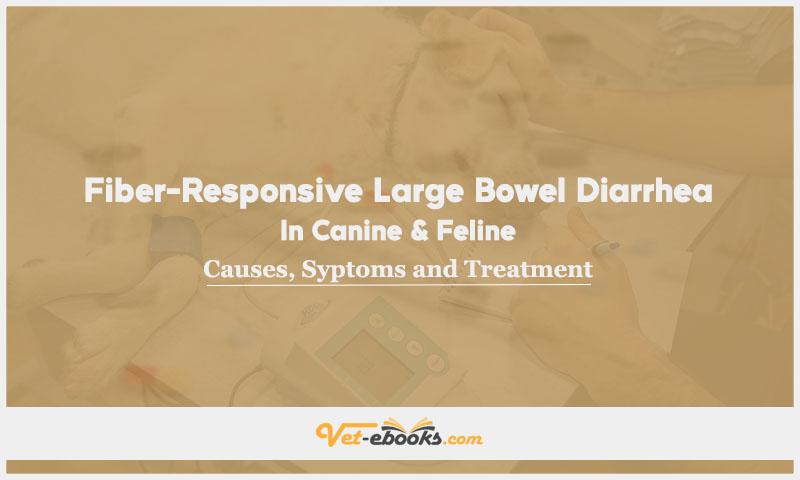
Contents
hide
Overview
- Canine chronic idiopathic large bowel diarrhea is a prevalent condition characterized by persistent diarrhea of unknown origin primarily affecting the large intestine.
- Exhibits a positive response to the inclusion of dietary soluble fiber supplements.
- Observed in around 25% of canines referred for assessment of persistent large bowel diarrhea at the author’s affiliated institution.
- The exclusion diagnosis means that known causes of persistent large bowel diarrhea must be ruled out. This means that dietary fiber supplements must be studied.
- There have been no pathophysiologic studies conducted.
- There were a total of three reports conducted on dogs, with a sample size of 83 cases.
- There is a possibility of overlap between a stress-related syndrome that lacks a clear definition and is often known as irritable bowel syndrome (IBS).
- This syndrome is sometimes referred to as nervous colitis, spastic colon, or mucous colitis.
- Certain canines diagnosed with IBS exhibit varied responses to the introduction of dietary fiber supplementation.
- In contrast, alternative interventions such as stress relief techniques, antispasmodic pharmaceuticals, and/or anti-anxiety therapies may be necessary for other affected dogs.
Causes of Fiber-Responsive Large Bowel Diarrhea In Canine
Causes
- The etiology of certain conditions remains uncertain.
- With stress and atypical personality features potentially contributing to their development.
Risk Factors
- Approximately 35% of canines exhibit stress symptoms or aberrant personality features.
- Diarrhea has been linked to various factors, including visitation, travel, relocation, building activities, the installation of invisible fences, recent adoption, and certain personality disorders such as nervousness, high-strung behavior, aggression, sensitivity, noise phobia, anxiety, and depressive illnesses.
Pathogenesis of Fiber-Responsive Large Bowel Diarrhea In Canine
- When dietary soluble fiber is given, the way the body reacts shows that there is either dysbiosis or abnormal intestinal motility.
- Colonic bacteria change their makeup or function when they ferment soluble fiber. This process gives prebiotic properties to the fiber.
- These prebiotics feed colonic bacteria and may help to improve dysbiosis because mammalian digestive enzymes cannot break them down.
- Soluble fibers are able to absorb water, hence enhancing the quality of the stool.
- Bacteria in the colon ferment soluble fiber, which makes volatile fatty acids. These acids give the cells that line the colon energy.
- Insoluble dietary fiber is very important for expanding the colonic lumen, which is needed to keep feces stored properly and encourage colonic motility.
- Psyllium is administered as a dietary fiber supplement to canines experiencing gastrointestinal issues.
- The source of this substance is derived from the seeds or husks of the plant known as ispaghula, and it is composed of approximately 90% soluble fiber.
Symptoms (History & Physical Examination) of Fiber-Responsive Large Bowel Diarrhea In Canine
History
- Chronic diarrhea exhibits typical features of the large bowel (tenesmus, excessive fecal mucus, hematochezia, heightened frequency, and urgency).
- Diarrhea occurs in episodes, with intermittent periods of normal stool.
- In around 25% of dogs, diarrhea may persist continuously.
- Less often observed symptoms include sporadic emesis, diminished appetite concurrent with bouts of diarrhea, stomach discomfort, and anal itching.
- Weight loss is a phenomenon that occurs rarely.
Physical Examination
- Does not uncover any noteworthy anomalies.
- The digital rectal examination typically yields unremarkable findings.
- The presence of feces in the context of this disease may be considered within the realm of normalcy, as it is often observed in an episodic manner.
- The presence of loose stool may be observed, which could potentially exhibit hematochezia or an excessive amount of mucus.
Diagnosis of Fiber-Responsive Large Bowel Diarrhea In Canine
1- From History and Physical Examination
2- Diagnostic Procedures
CBC/BIOCHEMISTRY/URINALYSIS
- No persistent or identifiable abnormalities are observed.
- Peripheral eosinophilia has been infrequently identified in dogs with colonic whipworms, eosinophilic colitis, and food allergies.
OTHER LABORATORY TESTS
- Fecal flotations using zinc sulfate indicate the absence of whipworms and other parasitic organisms.
- To address the sporadic release of whipworm eggs, dogs who do not receive monthly heartworm prevention treatment with milbemycin or moxidectin should have three fecal tests.
- Therapeutic deworming for whipworms, fenbendazole (50 mg/kg orally every 24 hours for three days), for dogs not receiving milbemycin or moxidectin.
- Clostridium perfringens enterotoxin fecal ELISA test yields negative results.
- To address fiber-responsive large bowel diarrhea, a “GI” diet trial is conducted for 2-4 weeks.
- Dogs with this condition will not observe any enhancement in stool quality during this trial.
- Prescription diets such as Hills i/d®, Purina EN®, and Royal Canin Digestive Low Fat®.
- The dog does not receive any other sources of nutrients during the food trial.
- These diets are characterized by high digestibility, low fiber content, and fat restriction.
- If the stool returns to a normal state during this diet trial, further diagnostic tests are unnecessary.
- The “GI” diet is continued for an additional 2-4 weeks, after which the original diet can be gradually reintroduced.
- Hypoallergenic diet for 2–3 weeks did not yield any improvement in feces quality.
- During the meal trial, the dog does not consume additional nutrients.
- In this dietary trial, the author suggests the utilization of a hydrolyzed diet.
- The protein that has undergone hydrolysis in these diets is considered to be hypoallergenic.
- If feces return to normal consistency, it indicates food hypersensitivity or inflammatory bowel disease, allowing for a potential diagnosis.
- The hydrolyzed diets are highly digestible, low fiber content, and limited fat content.
- Certain clinicians may choose to bypass the highly digestible diet experiment and proceed directly to the hydrolyzed diet trial.
- The reaction seen in the hydrolyzed diet trial may not be caused by dietary hypersensitivity; it could have been caused by things like digestibility, fat, and fiber content.
- Canines that exhibit positive reactions to a hypoallergenic food trial gradually transition back to their initial diet over a period of 12–14 weeks.
Imaging
Abdominal radiographs and ultrasounds are within normal limits.
Colonoscopy
Usually, within the normal range of values, or show only small vague changes, like slight increases in mucosal granularity or fragility.
3- Differential Diagnosis
- Highly digestible diet-responsive diarrhea.
- Whipworms.
- Lymphocytic plasmacytic colitis.
- Miscellaneous types of colitis.
- Colonic neoplasia (adenocarcinoma, lymphoma, and adenoma).
- Dietary indiscretion.
- Hypoallergenic diet-responsive diarrhea.
- Clostridium perfringens-associated diarrhea.
- Eosinophilic colitis.
- IBS.
- Cecal inversion.
Treatment of Fiber-Responsive Large Bowel Diarrhea In Canine
General:
- Healthcare services are administered in an outpatient setting when patients receive dietary fiber supplements as part of a GI diet.
- If any stresses have been found in the historical context, minimize or alter them.
- If abnormal personality features are present, address them through the utilization of behavioral therapy or medicine.
- A low-glycemic index diet that is easy to digest should have 1-3 tablespoons of psyllium hydrophobic mucilloid, spread out over two to three meals.
- Each tablespoon of psyllium hydrophobic mucilloid in Metamucil® contains 10.2 grams of psyllium.
- The median dosage for psyllium is 2 tablespoons per day.
- Adding less fiber or using different types of fiber had less of an effect on the initial response.
- In roughly 50% of canines, a gradual reduction in fiber intake leads to successful management of diarrhea after a period of 2–3 months.
Medications:
None indicated.
Some Notes:
- Following the successful relief of diarrhea through the use of psyllium supplementation, pet owners have the option to transition to a commercially available high-fiber diet.
- These diets consist of insoluble fiber and are easier to administer.
- Recurrence of diarrhea may manifest in certain canines.
Tip
Do You Want To Increase Your Veterinary Knowledge and Practical Skills?
You Can Now Browse and Download +3000 Books For Veterinary Professionals & Students Online.
Download Veterinary Books

